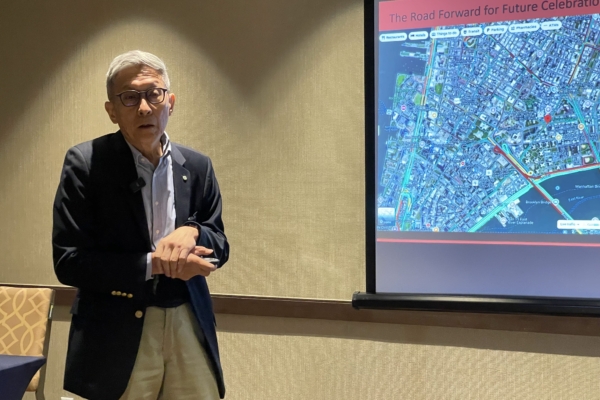On September 8th, the Eastern United States Chinese Academic Association held its 49th annual conference in Flushing, New York. Following the thematic keynote luncheon, various specialized panel discussions were held, open to the public for attendance.
The topics of the panel discussions included “Cultural Diversity and Cultural Innovation,” “Biomedical Technology and Healthy Living,” “Technological Innovation and Applications,” “Economic Growth and Business Outlook,” “Urban Planning and Transportation,” and “Success Stories of Asian American Experiences.”
In the discussion on “Cultural Diversity and Educational Innovation,” former president of the New York Chinese Writers Association, Li Xiuzhen, introduced the establishment and development of the association. It is composed of Chinese individuals from mainland China, Taiwan, Hong Kong, and other regions who have immigrated overseas at different times and for different reasons. They connect through Chinese writing and the roots of their native cultures, appreciating and learning from each other. Particularly during the pandemic, members continued to connect through virtual meetings, literary awards, and publications, releasing the essay collection “Through the Valley, Memories of New York During the Pandemic.” The writer’s association was founded during the May Fourth Literary Festival in 1991, marking 33 years of existence and being one of the 23 branch chapters of the North American Chinese Writers Association. They are set to publish the fifth volume of the members’ literary collection this year.
The panel discussion on “Cultural Diversity and Educational Innovation” also featured CPC coordinator Li Ye speaking on “Family Childcare – Challenges in the Post-COVID Era,” introducing CPC’s support and assistance for education and childcare among American Chinese families. By providing guidance, assessment, consultation, and training, CPC aims to enhance the quality of family childcare services. CPC, established during the civil rights movement in the United States, is currently the largest social service organization for Asian Americans in the country.
In the small group discussion on “Urban Planning and Transportation,” Chen Zuozhou, executive director of the Chinatown Development Corporation, highlighted the long-standing lack of celebration and memorial venues in Manhattan’s Chinatown.
The Lieutenant Benjamin Kimlau Memorial, built in 1962, where the Chinese-American Veterans Arch also stands, was designed by Chinese architect Poy Gum Lee to commemorate the Chinese-American soldiers who sacrificed during World War II. Before the memorial plaza, Chinese-American veterans had to stand in the middle of the road each year to pay tribute to the fallen. This is the only landmark building in New York City that recognizes Chinese contributions but has deteriorated over the years, with cracks appearing in its pillars.
The area of the plaza is one of the most important intersections in Lower Manhattan, where many major roads converge. Chen Zuozhou suggested the restoration of the space to its former glory, reversing its current state of disrepair.
Buckley Yung, Director of Bus Service Planning at the New York City Transit Authority, introduced the Metropolitan Transportation Authority’s (MTA) plan to replace its entire bus fleet with zero-emission vehicles by 2040. One method includes replacing diesel and compressed natural gas (CNG) bus fleets with 100% zero-emission bus fleets, with plans to complete the transition by 2040.

